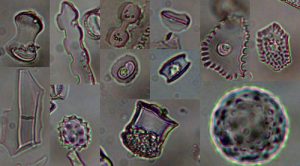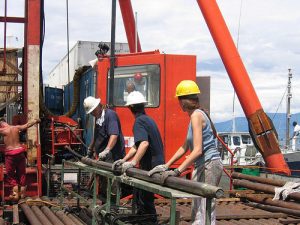Researchers have found evidence that suggests the Toba volcanic eruption on Sumatra about 74000 years ago did not create a long volcanic winter effect in East Africa, neither did it cause a significant drop of human population at that time.

Researchers led by Chad L. Yost studied microscopic bits of charcoal and silica-containing plant parts called phytoliths in two sediment cores from Lake Malawi, the southernmost of the East African Rift lakes. They used phytoliths – ancient plant parts that wash into and accumulate on the bottoms of lakes to reconstruct a region’s past ecosystem. The team analysed samples that represented, on average, every 8.5 years within that 300-year interval. The researchers did not find any significant changes in lower-elevation vegetation post-eruption. The team did find some die-off of mountain plants just after the eruption, but according to the researchers cooling from the eruption might have injured frost-intolerant plants. A drastic multi-year cooling after the eruption would result in finding, evidence of a massive die-off of the region’s vegetation at all elevations within the cores.
The Lake Malawi Drilling Project took the cores from the lake bottom in 2005. The lake is one of the deepest in the world. The material archived in the cores goes back more than one million years. Two cores were taken from the lake: one from the north end of the lake, which is closer to the mountains, and the other from the central part of the lake. In previous research, other scientists had pinpointed what layer in those cores had glass and crystals from the Toba eruption.
Archaeologists are certain that anatomically modern humans were living within 50 kilometres of Lake Malawi. The Toba catastrophe hypothesis suggests the eruption caused human populations to shrink. But according to this new research people would have been able to travel to habitats and lower elevations that had little to no cooling effect from the Toba eruption, and most of the region’s known archaeological sites are from low elevations, not the mountains. If the Toba catastrophe hypothesis is true, the massive die-off of vegetation would have resulted in more wildfires and therefore more charcoal washing into the lake. However, the researchers did not find an increase in charcoal outside the range of normal variability in the sediments deposited after the eruption. Hence it was possible to determine that the Toba eruption had no significant negative impact on vegetation growing in East Africa.

(after University of Arizona Department of Geosciences, Popular Archaeology, Lake Malawi Drilling Project, Andrew S. Cohen, Lily J. Jackson, Jeffery R. Stone, Terre Haute & Chad L. Yost)